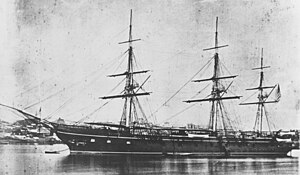
Puget Sound Naval Shipyard, officially Puget Sound Naval Shipyard and Intermediate Maintenance Facility, is a United States Navy shipyard covering 179 acres (0.7 km2) on Puget Sound at Bremerton, Washington in uninterrupted use since its establishment in 1891; it has also been known as Navy Yard Puget Sound, Bremerton Navy Yard, and the Bremerton Naval Complex.

The fifth USS Boston was a protected cruiser and one of the first steel warships of the "New Navy" of the 1880s. In some references she is combined with Atlanta as the Atlanta class, in others as the Boston class.

The Boston Navy Yard, originally called the Charlestown Navy Yard and later Boston Naval Shipyard, was one of the oldest shipbuilding facilities in the United States Navy. It was established in 1801 as part of the recent establishment of the new U.S. Department of the Navy in 1798. After 175 years of military service, it was decommissioned as a naval installation on 1 July 1974.

The first USS Pensacola was a screw steamer that served in the United States Navy during the U.S. Civil War.

Fore River Shipyard was a shipyard owned by General Dynamics Corporation located on Weymouth Fore River in Braintree and Quincy, Massachusetts. It began operations in 1883 in Braintree, and moved to its final location on Quincy Point in 1901. In 1913, it was purchased by Bethlehem Steel, and later transferred to Bethlehem Shipbuilding Corporation. It was sold to General Dynamics in 1963, and closed in 1986. During its operation, yardworkers constructed hundreds of ships, for both military and civilian clients.
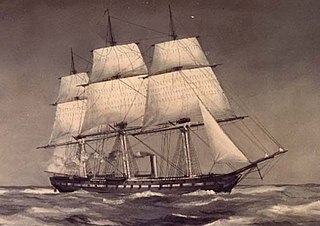
USS Wabash was a steam screw frigate of the United States Navy that served during the American Civil War. She was based on the same plans as Colorado. Post-war she continued to serve her country in European operations and eventually served as a barracks ship in Boston, Massachusetts, and was sold in 1912.

USS Braine (DD-630), a Fletcher-class destroyer, was a ship of the United States Navy named for Rear Admiral Daniel L. Braine (1829–1898), who served in the American Civil War. Constructed by Bath Iron Works in Bath, Maine, the ship was launched on 7 March 1943 and commissioned on 11 May 1943. The destroyer took part in the United States' naval campaign in the South Pacific during World War II. Following the war, the vessel was decommissioned and placed in reserve. During the Korean War, Braine was recommissioned and operated in the Mediterranean Sea before being decommissioned for the final time by the United States Navy in 1971. The destroyer was sold to Argentina and renamed ARA Almirante Domecq Garcia after Admiral Manuel Domecq Garcia and served with the Argentinian Navy until disposed of as a target ship in 1983.

USS Clemson (DD-186/AVP-17/AVD-4/APD-31) was the lead ship of her class of destroyers which served in the United States Navy during World War II. She was named for Midshipman Henry A. Clemson (1820–1846), who was lost at sea when the brig USS Somers capsized in a sudden squall off Vera Cruz on 8 December 1846 while chasing a blockade runner. Entering service in 1919, the ship had a brief active life before placed in reserve in 1922. Converted to an aircraft tender in 1939, the ship reactivated in 1940. In 1943, Clemson reconverted to a destroyer and served in the Battle of the Atlantic during World War II. In 1944, the ship was converted into a high speed transport and transferred to the Pacific taking part in several invasions. Following the end of the war, the ship was taken out of service again and sold for scrapping in 1946.

USS Bruce (DD-329) was a Clemson-class destroyer in the United States Navy following World War I.
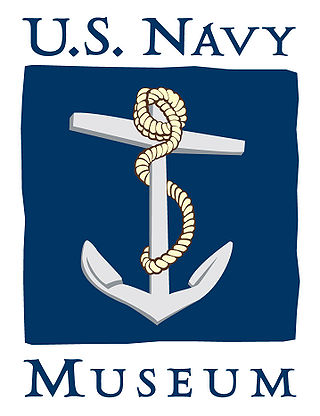
The National Museum of the United States Navy, or U.S. Navy Museum for short, is the flagship museum of the United States Navy and is located in the former Breech Mechanism Shop of the old Naval Gun Factory on the grounds of the Washington Navy Yard in Washington, D.C., United States.

USS LST-310 was one of 390 tank landing ships (LSTs) built for the United States Navy during World War II.
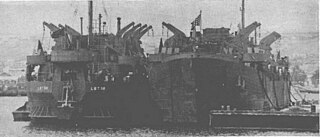
USS LST-316 was one of 390 tank landing ships (LSTs) built for the United States Navy during World War II.
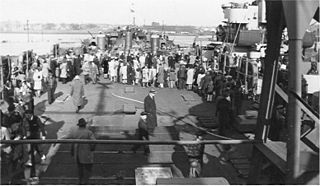
USS LST-317 was one of 390 tank landing ships (LSTs) built for the United States Navy during World War II.

USS LST-332 was one of 390 tank landing ships (LSTs) built for the United States Navy during World War II.

USS LST-994 was an LST-542-class tank landing ship in the United States Navy. Like many of her class, she was not named and is properly referred to by her hull designation.

USS LST-981 was an LST-542-class tank landing ship in the United States Navy. Like many of her class, she was not named and is properly referred to by her hull designation.

USS Hancock (AP-3) was a transport ship in the United States Navy. Acquired by the Navy in 1902, she participated in World War I and a number of US military and diplomatic ventures prior to that. She was named for Founding Father John Hancock.

USS Fulton was a steamer that served the U.S. Navy prior to the American Civil War, and was recommissioned in time to see service in that war. However, her participation was limited to being captured by Confederate forces in the port of Pensacola, Florida, at the outbreak of war.

USS Iona (YT-107) was a wooden-hulled, harbor tug of the United States Navy that served during World War II.
